
How to Use esp32 38p typec cp2102: Examples, Pinouts, and Specs
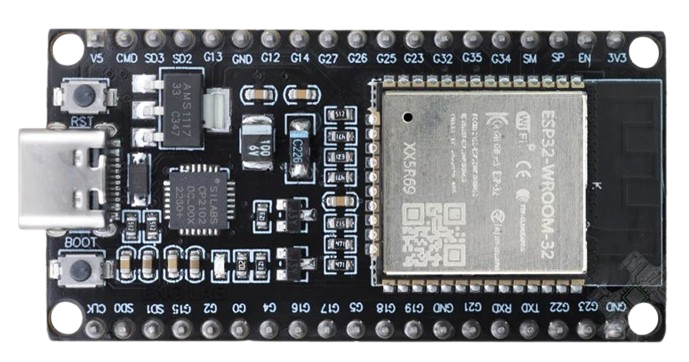
 Design with esp32 38p typec cp2102 in Cirkit Designer
Design with esp32 38p typec cp2102 in Cirkit DesignerIntroduction
The ESP32 38P Type-C CP2102 is a versatile and powerful microcontroller module developed by Espressif Systems. It is based on the ESP32 dual-core processor, which integrates Wi-Fi and Bluetooth capabilities, making it ideal for IoT (Internet of Things) applications. This module features a USB Type-C interface for easy connectivity and a CP2102 USB-to-UART bridge for seamless communication with a computer.
Explore Projects Built with esp32 38p typec cp2102
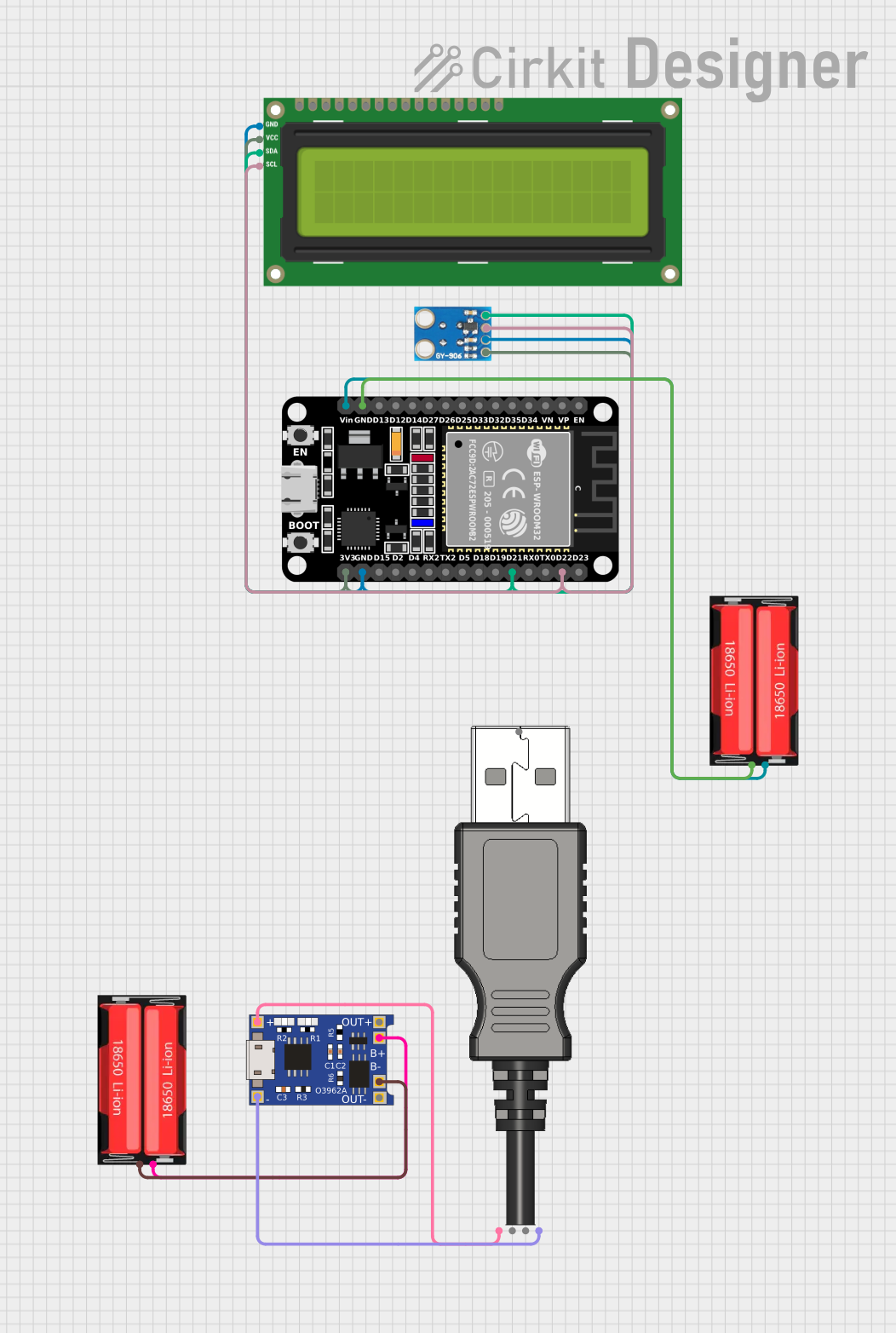
 Open Project in Cirkit Designer
Open Project in Cirkit Designer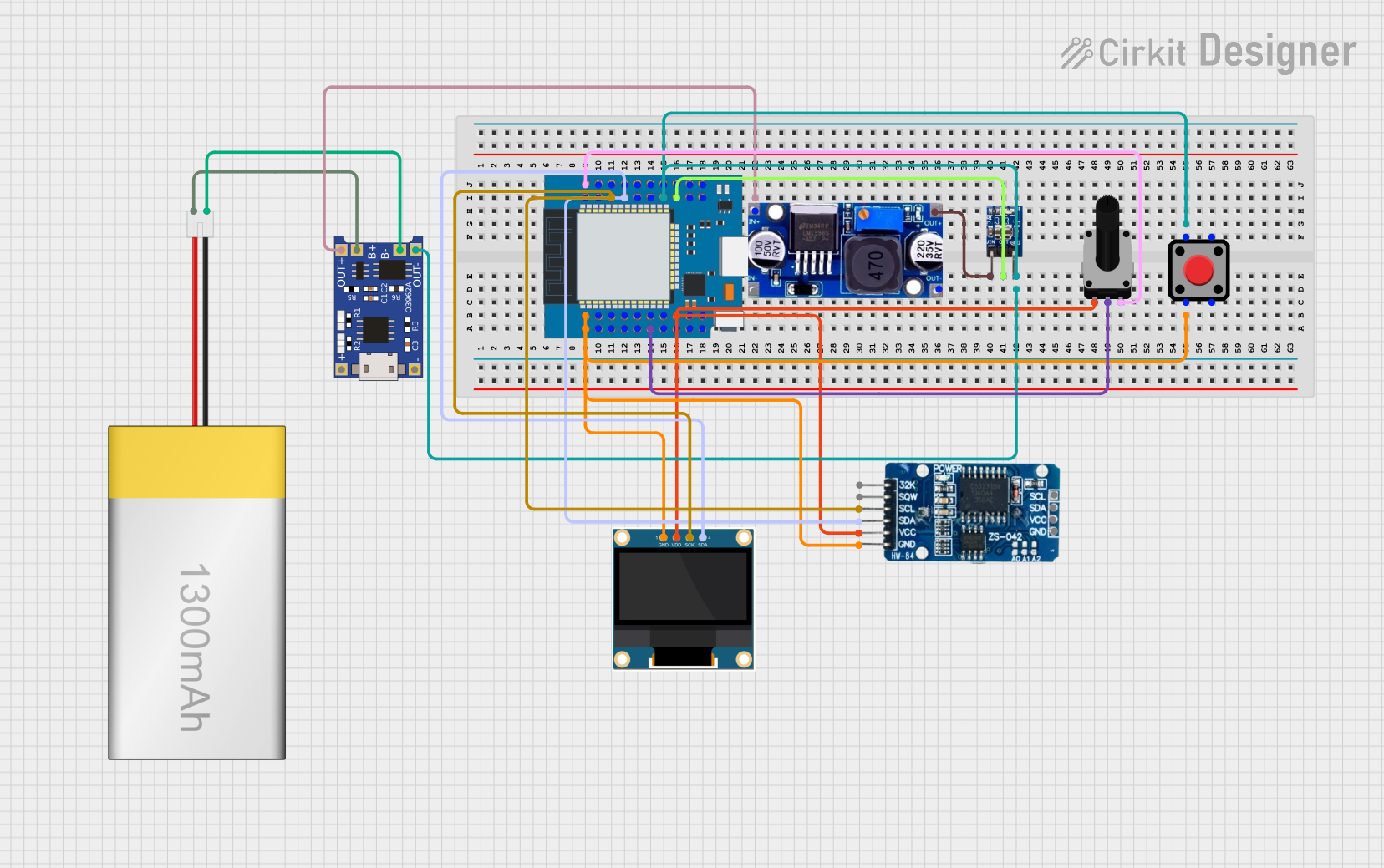
 Open Project in Cirkit Designer
Open Project in Cirkit Designer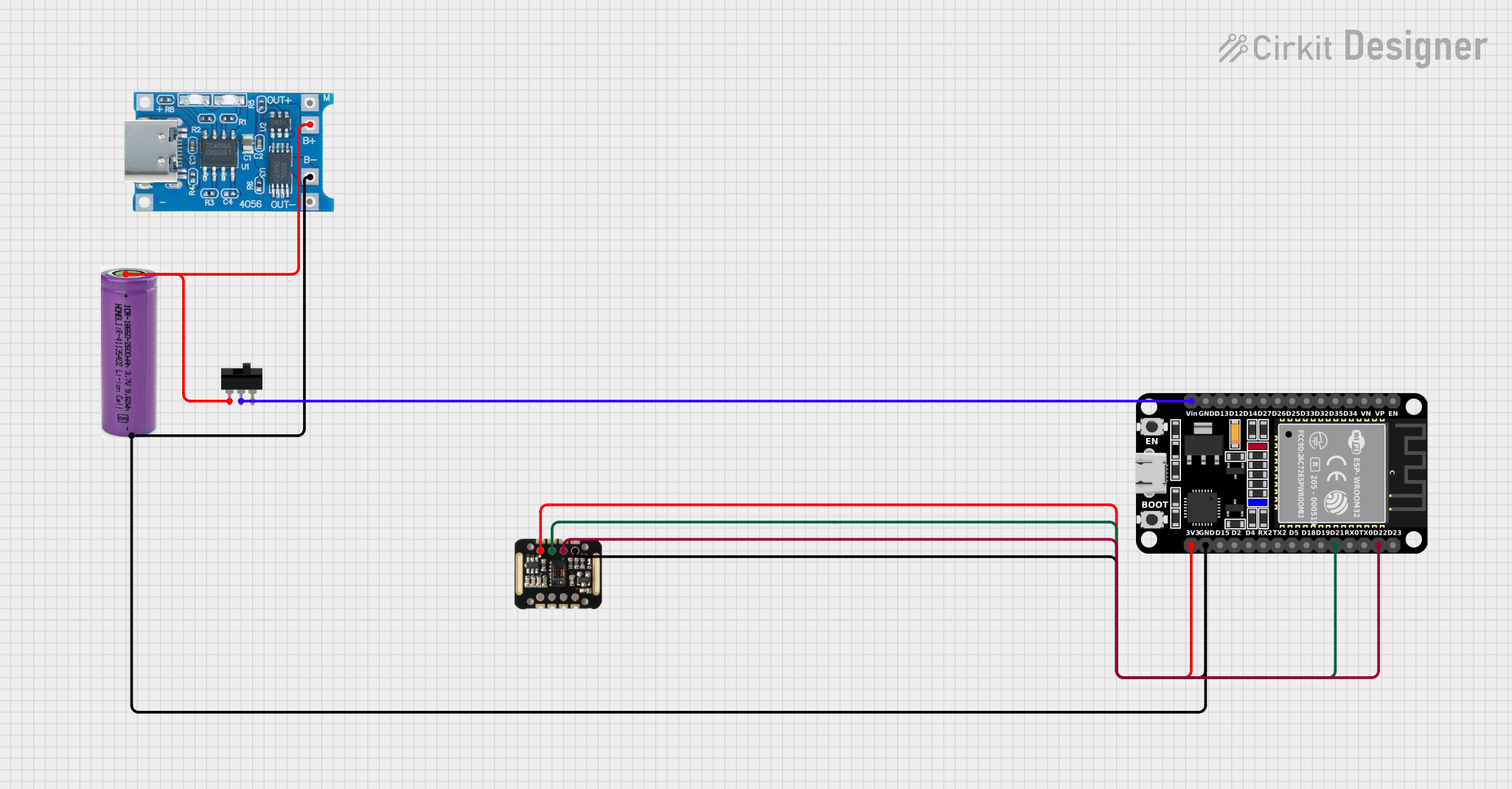
 Open Project in Cirkit Designer
Open Project in Cirkit Designer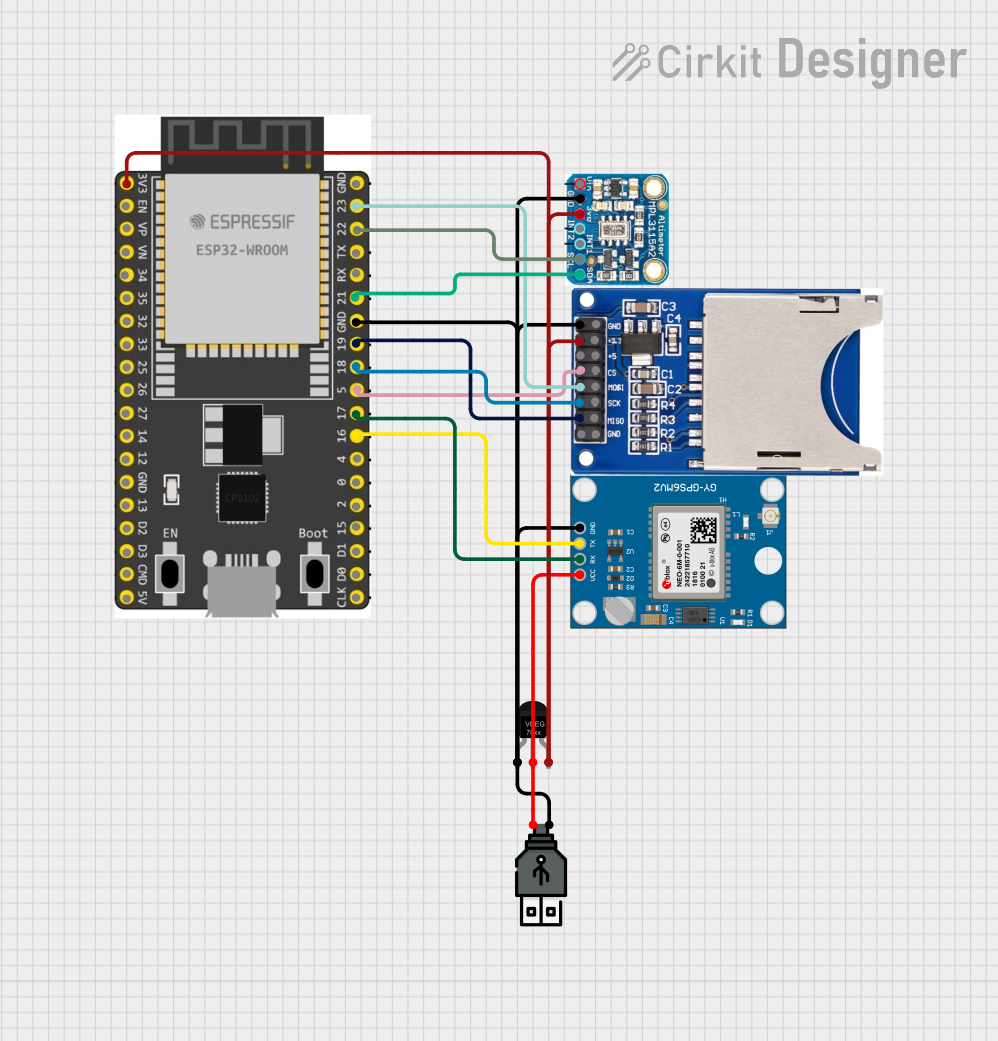
 Open Project in Cirkit Designer
Open Project in Cirkit DesignerExplore Projects Built with esp32 38p typec cp2102

 Open Project in Cirkit Designer
Open Project in Cirkit Designer
 Open Project in Cirkit Designer
Open Project in Cirkit Designer
 Open Project in Cirkit Designer
Open Project in Cirkit Designer
 Open Project in Cirkit Designer
Open Project in Cirkit DesignerCommon Applications and Use Cases
- IoT devices and smart home automation
- Wireless sensor networks
- Wearable electronics
- Robotics and drones
- Prototyping and development of Wi-Fi/Bluetooth-enabled devices
Technical Specifications
Key Technical Details
- Processor: Dual-core Xtensa® 32-bit LX6 CPU
- Clock Speed: Up to 240 MHz
- Flash Memory: 4 MB (varies by model)
- SRAM: 520 KB
- Wireless Connectivity: Wi-Fi 802.11 b/g/n and Bluetooth 4.2 (Classic + BLE)
- Operating Voltage: 3.3V
- Input Voltage: 5V (via USB Type-C)
- GPIO Pins: 38
- USB Interface: CP2102 USB-to-UART bridge
- Power Consumption: Ultra-low power consumption in deep sleep mode (~10 µA)
- Dimensions: 51mm x 25.5mm
Pin Configuration and Descriptions
The ESP32 38P module has 38 pins, each with specific functions. Below is a table summarizing the key pins:
| Pin Name | Function | Description |
|---|---|---|
| VIN | Power Input | Connect to 5V power source (via USB Type-C or external supply). |
| GND | Ground | Common ground for the module. |
| 3V3 | 3.3V Output | Provides 3.3V output for external components. |
| EN | Enable | Active-high pin to enable the module. |
| IO0 | GPIO0 / Boot Mode | Used for boot mode selection or general-purpose I/O. |
| IO2 | GPIO2 | General-purpose I/O pin. |
| IO4 | GPIO4 | General-purpose I/O pin. |
| IO5 | GPIO5 | General-purpose I/O pin. |
| IO12 | GPIO12 | General-purpose I/O pin. |
| IO13 | GPIO13 | General-purpose I/O pin. |
| IO14 | GPIO14 | General-purpose I/O pin. |
| IO15 | GPIO15 | General-purpose I/O pin. |
| IO16 | GPIO16 | General-purpose I/O pin. |
| IO17 | GPIO17 | General-purpose I/O pin. |
| IO18 | GPIO18 / SPI_CLK | General-purpose I/O or SPI clock pin. |
| IO19 | GPIO19 / SPI_MISO | General-purpose I/O or SPI MISO pin. |
| IO21 | GPIO21 / I2C_SDA | General-purpose I/O or I2C data pin. |
| IO22 | GPIO22 / I2C_SCL | General-purpose I/O or I2C clock pin. |
| IO23 | GPIO23 / SPI_MOSI | General-purpose I/O or SPI MOSI pin. |
| IO25 | GPIO25 / DAC1 | General-purpose I/O or DAC output. |
| IO26 | GPIO26 / DAC2 | General-purpose I/O or DAC output. |
| IO27 | GPIO27 | General-purpose I/O pin. |
| IO32 | GPIO32 / ADC1_CH4 | General-purpose I/O or ADC input channel 4. |
| IO33 | GPIO33 / ADC1_CH5 | General-purpose I/O or ADC input channel 5. |
| IO34 | GPIO34 / ADC1_CH6 (Input Only) | ADC input channel 6 (input-only pin). |
| IO35 | GPIO35 / ADC1_CH7 (Input Only) | ADC input channel 7 (input-only pin). |
Usage Instructions
How to Use the ESP32 38P in a Circuit
Powering the Module:
- Connect the module to a 5V power source using the USB Type-C port or the VIN pin.
- Ensure the GND pin is connected to the ground of your circuit.
Programming the Module:
- Install the CP2102 USB-to-UART driver on your computer (if not already installed).
- Use the Arduino IDE or Espressif's ESP-IDF to write and upload code to the module.
- Select the correct board (e.g., "ESP32 Dev Module") and COM port in the Arduino IDE.
Connecting Peripherals:
- Use the GPIO pins to connect sensors, actuators, or other peripherals.
- For I2C devices, use GPIO21 (SDA) and GPIO22 (SCL).
- For SPI devices, use GPIO18 (CLK), GPIO19 (MISO), and GPIO23 (MOSI).
Boot Mode Selection:
- To enter bootloader mode, hold the IO0 pin low while resetting the module.
Important Considerations and Best Practices
- Voltage Levels: Ensure all connected peripherals operate at 3.3V logic levels to avoid damaging the module.
- Deep Sleep Mode: Use deep sleep mode to minimize power consumption in battery-powered applications.
- Antenna Placement: Avoid placing metal objects near the onboard antenna to ensure optimal Wi-Fi and Bluetooth performance.
- Heat Management: The ESP32 can get warm during operation; ensure proper ventilation if used in enclosed spaces.
Example Code for Arduino UNO Integration
Below is an example of using the ESP32 38P to blink an LED connected to GPIO2:
// Example: Blink an LED connected to GPIO2 on the ESP32 38P module
// Define the GPIO pin for the LED
#define LED_PIN 2
void setup() {
// Initialize the LED pin as an output
pinMode(LED_PIN, OUTPUT);
}
void loop() {
// Turn the LED on
digitalWrite(LED_PIN, HIGH);
delay(1000); // Wait for 1 second
// Turn the LED off
digitalWrite(LED_PIN, LOW);
delay(1000); // Wait for 1 second
}
Troubleshooting and FAQs
Common Issues and Solutions
Issue: The ESP32 is not detected by the computer.
Solution:- Ensure the CP2102 driver is installed correctly.
- Check the USB cable for data transfer capability (some cables are power-only).
- Try a different USB port or cable.
Issue: Unable to upload code to the ESP32.
Solution:- Ensure the correct board and COM port are selected in the Arduino IDE.
- Hold the IO0 pin low while pressing the reset button to enter bootloader mode.
Issue: Wi-Fi or Bluetooth connectivity issues.
Solution:- Check the antenna placement and ensure no obstructions.
- Verify the Wi-Fi credentials or Bluetooth pairing process.
Issue: Module overheating during operation.
Solution:- Reduce the clock speed or optimize the code to minimize CPU usage.
- Ensure proper ventilation or add a heatsink if necessary.
FAQs
Q: Can the ESP32 38P be powered by a battery?
A: Yes, you can power the module using a 3.7V LiPo battery connected to the VIN pin with a suitable voltage regulator.Q: What is the maximum number of GPIO pins available?
A: The module provides 38 GPIO pins, but some are shared with other functions (e.g., ADC, DAC, SPI).Q: Does the module support OTA (Over-the-Air) updates?
A: Yes, the ESP32 supports OTA updates, which can be implemented using the Arduino IDE or ESP-IDF.Q: Can I use the ESP32 38P with MicroPython?
A: Yes, the ESP32 is compatible with MicroPython. You can flash the MicroPython firmware to the module and use it for development.